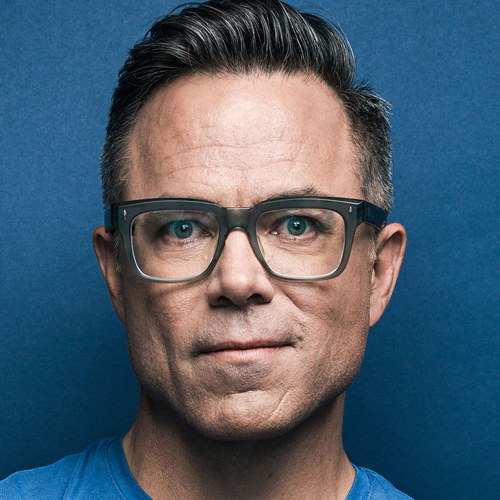
I’m a Patriots fan. I was born outside Boston and lived in New England as a child. If the dreamy Tom Brady needs a kidney, I’m there for him. Seriously. But he regularly tests my faith with his whacky opinions, especially his views about health and fitness. (I can’t even process the Trump stuff.)
Brady’s intense, hyperstrict diet has received the most media attention. He won’t consume, for example, white flour, white sugar, tomatoes, peppers, mushrooms, MSG, or caffeine. He has never had coffee, which, to me, is like saying you’ve never breathed air and don’t like the sunrise. He also doesn’t eat fruit.
Of course, there is almost no evidence to support this monk-like approach to eating. (Hey Tom, coffee is good for you!) And some of his practices — he will only use Himalayan pink salt, for instance — register as full out kook. Brady’s approach seems to be loosely based on the alkaline diet, which is the idea that you can control the pH of your blood through the food you eat. (Spoiler: you can’t.) As noted in a 2016 systematic review of the relevant evidence, “there is almost no actual research” to support the ideas behind the alkaline diet. Despite this reality, the media portrayals of Brady’s approach are, in general, pretty positive, often suggesting that the diet is one reason he is still playing so well. The result? Tom’s US$200 diet book sold out as soon as it was made available.
But even when the media ridicules celeb health advice, the pseudoscience seems to win.
Recently, Gwyneth Paltrow’s lifestyle website, “goop,” told the women of the world that it was wise to place a jade egg in their vaginas. The egg will “increases chi, orgasms, vaginal muscle tone, hormonal balance, and feminine energy in general,” or so the goop website claims. Apparently, this practice was – until the goop-y disclosure by Gwyneth, I presume – “a strictly guarded secret of Chinese royalty in antiquity.”
No surprise, the science-informed health community was not impressed. There were numerous articles mocking the advice and several terrific takedowns, such as a great piece by Jen Gunter that noted the significant potential harms. I’ve been following Gwyneth’s health-advice shenanigans for years, and this was the most vigorous and instantaneous media push back I’ve seen. The result? The US$66 jade eggs still sold out almost as soon as they were available.
Given this kind of outcome – and there are countless other examples of celebrity endorsed misinformation surviving credible critiques – one can’t help but feel a bit discouraged. As Margaret McCartney, a UK author and family physician, recently wrote in the British Medical Journal in relation to the health and science media, “what we’re doing is clearly not working.”
While both the Brady and Paltrow examples are frustrating, the takeaway for the health media shouldn’t be that evidence doesn’t matter. It does. In fact, during this time of alternative facts and pseudoscience noise we need to double down on the science. We need to keep countering the misinformation. As I’ve noted elsewhere, over the long term, this approach works and matters.
But we also need to recognize how tough and complex the battle against “alternative facts” and pseudoscience can be. Research has found, for example, that most individuals find “people like them” to be as credible as “academic experts.” While Gwyneth and Tom may not be “like” most people, they speak to things that many value and have brands that people relate to and/or aspire – consciously or not – to emulate.
Also, for a whole bunch of reasons, eloquently describing what the science actually says about a topic, even if done well, may have little impact. In fact, using simplified descriptions of the relevant science, something that is often an explicit goal of the health media and pseudoscience debunkers (myself included), can backfire. A 2016 study found that if the science appears too straightforward, people might be more inclined to follow their own gut impressions and ignore experts. In other words, making it look easy and comprehensible causes readers to underestimate both the complexity of the science and the value of expert opinion. It may also, I suspect, make people more susceptible to the simplistic and science-y sounding explanations flowing from popular culture about the value of things like jade eggs or hyper-strict diets. Some may think: “Hey, I get this stuff, and Gwyneth’s advice seems plausible – experts be damned.”
And, alas, we can’t forget the sway of a good anecdote – and Tom Brady is one heck of an anecdote. He is a superstar quarterback that, at age 39, continues to play at his best. When he says that his diet and exercise program have contributed to his success, that claim is hard to counter with science alone. Indeed, studies have demonstrated the power of an engaging narrative to overwhelm scientific data. When it is Tom Brady versus a systematic review, Tom Brady will likely win.
So, let’s fight fire with fire. Let’s explain science in a way that speaks to the values of the audience. We need to think about why people are drawn to jade eggs and insanely absurd diets. Let’s communicate the relevant science in a way that is comprehensible and engaging, while still reminding the audience about the complexity of the relevant evidence (Dear Gwyneth, gynaecology is hard!) – a communication strategy that has been shown to work. And finally, let’s use narratives and interesting stories to communicate what the best available science actually says.
Jade eggs and Himalayan pink salt may win a few battles, but I’m certain science will eventually prevail.
Photo: AP Photo/Elise Amendola/Canadian Press
Do you have something to say about the article you just read? Be part of the Policy Options discussion, and send in your own submission. Here is a link on how to do it. | Souhaitez-vous réagir à cet article ? Joignez-vous aux débats d’Options politiques et soumettez-nous votre texte en suivant ces directives.









